er

FAMSA Newsle
Federation of
African Medical Students’
Associations September 2022 Edition www.famsanet.org

www.famsanet.org September 2022 Edition FAMSA Newsle er Contents Opportunities for Medics 35th FAMSA General Assembly 2021 36th FAMSA General Assembly 2022 Terrorism and its Medical Implications The Forgotten Victims Technology in Medicine: Africa’s Perspective Poem Understanding Vaccine Types Challenges Facing Medical Students in Nigeria and Africa at Large Africa, Knowledge, and Research Restore Our Earth

THE FORGOTTEN VICTIMS IN THE SHADOWS Mary Sathela Kanu 4th Year Medical Student
When gender issues are discussed, especially gender-based violence, the first people that come to our minds are young girls and women, ignoring intentionally or subcon sciously that our poor boys and men are abused.
The world at large has had a rising list of men coming up bravely, to proclaim these reali ties which are a victim of us. For a very long time for many, men are considered head and should never be seen as victims so when these men are faced with real-life experiences like abuse they tend to shy away from telling, afraid of the possible outcomes like provo cation and disbelief in the fact that a man cannot be raped.
Ranging from physical, mental, and social assault, men like women are prone to them too and what’s worse is that theirs are overlooked. “Till this day nobody believed my aunt sexually abused me after school when nobody was around” These are the words of a 20-year-old man living in Freetown.
According to the United States Center for Disease Control, one out of 3 men has faced abuse from their intimate partner. This is clear evidence showing even the first-world countries face this same enemy.
In Africa where everything is silent and strictly based on gender and norms, traditions, cultures and even religion have now made the battle even harder to fight and the enemy even more invincible.
In the African setting, a boy growing up has added advantages according to the society. He can be left alone or with a stranger or family member without second thoughts. This has been the opening chapter for many boys who have faced this abuse. In many cases, as a young man growing up, a lady can’t and should not beat you so in a case where this boy, young man, or older man is facing physical violence he prefers to keep shut so as to save his respect and reputation due to the fear that many would not believe or would use it to provoke him.

The enemy we want to face is actually hidden in our shadows and the best way to fight a shadow is by shining the light on it.
For centuries men have silently gone through this abuse in Africa and Sierra Leone to be specific. Many have been beaten, starved, and even raped by family members, friends, and even their spouses.
Conclusively, the best way to fight this is by giving more ears to the cry of these boys and men that have been silenced. Giving them equal platforms like the ones given to the ladies which includes sensitization and more public lectures to show and prove that this is real.
www.famsanet.org September 2022 Edition FAMSA Newsle er 1

TYPES OF VACCINES
1. LIVE ATTENUATED VACCINES
Live attenuated vaccines boost the immune system and protect against disease by using a live but weakened form of the pathogen.
This sort of vaccination is created by weakening the virus through sever al processes. A common method involves passing the microbe through animal embryos or cell cultures. This results in a pathogen that can still be identified by the human immune system but cannot multiply successfully in a human host. This type of vaccine will elicit an immune response that helps the body protect itself against future infection upon administration.
2. KILLED OR INACTIVATED VACCINES

This is the first vaccine type that was developed. It is made by destroying the microbe using chemicals or radiation.
The procedure of inactivating a vaccination involves the addition of a chemical, such as formaldehyde, or radiation, such as electron beam irradiation. This reduces the pathogen’s ability to multiply while keeping it recognizable to the immune system. For long-term immunity to be achieved using inactivated vaccines, booster doses are required. This is because inactivated vaccines produced a weaker immune response compared to that of live attenuated vaccines. Inactivated vaccinations are used to treat diseases such as Hepatitis A, Flu, Polio, Cholera, Pertussis, and Rabies.
3. OXOID VACCINES
Instead of microbes, toxoid vaccines contain the inactivated toxins produced by the disease-causing organism. They stimulate the production of antibodies against a bacterial poison. Chemical or heat treatment inactivates the toxin. Since the immunity provided by toxoids does not last for a lifetime, booster shots are required to maintain disease protection. Diseases caused by bacteria toxins like diph theria, botulism, and tetanus are preventable with toxoids.
4. BIOSYNTHETIC VACCINES
This is a group name for conjugate, subunit, recombinant, and polysaccharide vac cines. They are made up of bits and pieces of the infectious pathogen. Protein taken from the bacteria or virus that causes the disease is used to make sub unit vaccines. These proteins are then employed to drive the immune system into producing disease-fighting antibodies. The goal behind subunit vaccinations is to employ only antigens, or pieces of the virus or bacteria, rather than full viruses or bac

www.famsanet.org September 2022 Edition FAMSA Newsle er 3
COVID-19CORONAVIRUSDISEASE 2019INJECTION ONLY COVID-19 VACCINE 20ml COVID-19 CORONAVIRUS DISEASE 2019 INJECTION ONLY COVID-19 VACCINE 20ml
teria. The vaccine triggers an immune response to these antigens, which are usually harmless in and of themselves.
Conjugate vaccines contain a protein extracted from bacteria or viruses, as well as another molecule known as a carrier protein. This carrier protein aids in the attach ment of the vaccine to cells in the body as well as the stimulation of their immune response. The immune response generated by subunit vaccines alone is not as pow erful as that of conjugate vaccines.

Recombinant vaccines are created when a pathogen’s protein is isolated and geneti cally engineered into the genes of another cell, while the microbe’s outer wall layer is where polysaccharide vaccines are gotten from.
Diseases that are preventable using biosynthetic vaccines include Hepatitis B, Human papillomavirus, pneumococcal disease, and meningococcal disease.

www.famsanet.org September 2022 Edition FAMSA Newsle er 4
mRNA VACCINES
The mRNA vaccine is a type of vaccine that uses messenger RNA to stimulate a cell’s immune response. The mRNA gives the cell a code to create proteins to trigger anti body production. The mRNA molecules will not cause any harm to the human body because it only contains genetic information that can be translated into proteins. One of the biggest advantages of mRNA vaccines is that they can elicit an immune response without the need for an injection, which makes them more desirable than traditional vaccines. They also show no signs of adverse reactions and may be able to be created quickly and easily.
The mRNA vaccine can be used for diseases like HIV, COVID-19 malaria, and influenza.
VIRAL VECTOR VACCINES
This type of vaccine is made from a virus that has been genetically modified to pro duce an antigen. It works by integrating the genetic material of the virus with that of the host. The vaccine is made up of a recombinant DNA sequence that expresses the virus’s protein or peptide. When given, It stimulates the immune system to fight against the virus. Ebola virus and COVID-19 both used viral vector technology. Its use in Zika, flu, and HIV is still being researched

CONCLUSION
Every day, researchers work to create new vaccines and improve existing ones. As we work toward a healthier future, the goal is to develop a vaccine that is less expensive and provides longer immunity than existing vaccines.
Noami Ezefuna UNMSA
www.famsanet.org September 2022 Edition FAMSA Newsle er 5
Olatunji Sion-Selah, Deborah Ogundijo, and Akinlade Nasirat, University of Ibadan Medical Students' Association.
Over the years, data from the World Health Organization (WHO) has shown that Africa carries 25% of the world's disease burden. However, her share of global health expenditures is less than 1%. It gets worse, though. Currently, African countries manu facture less than 2% of the medicine they sell to healthcare facilities. According to the WHO, technology is the "application of organized knowledge and skills in the form
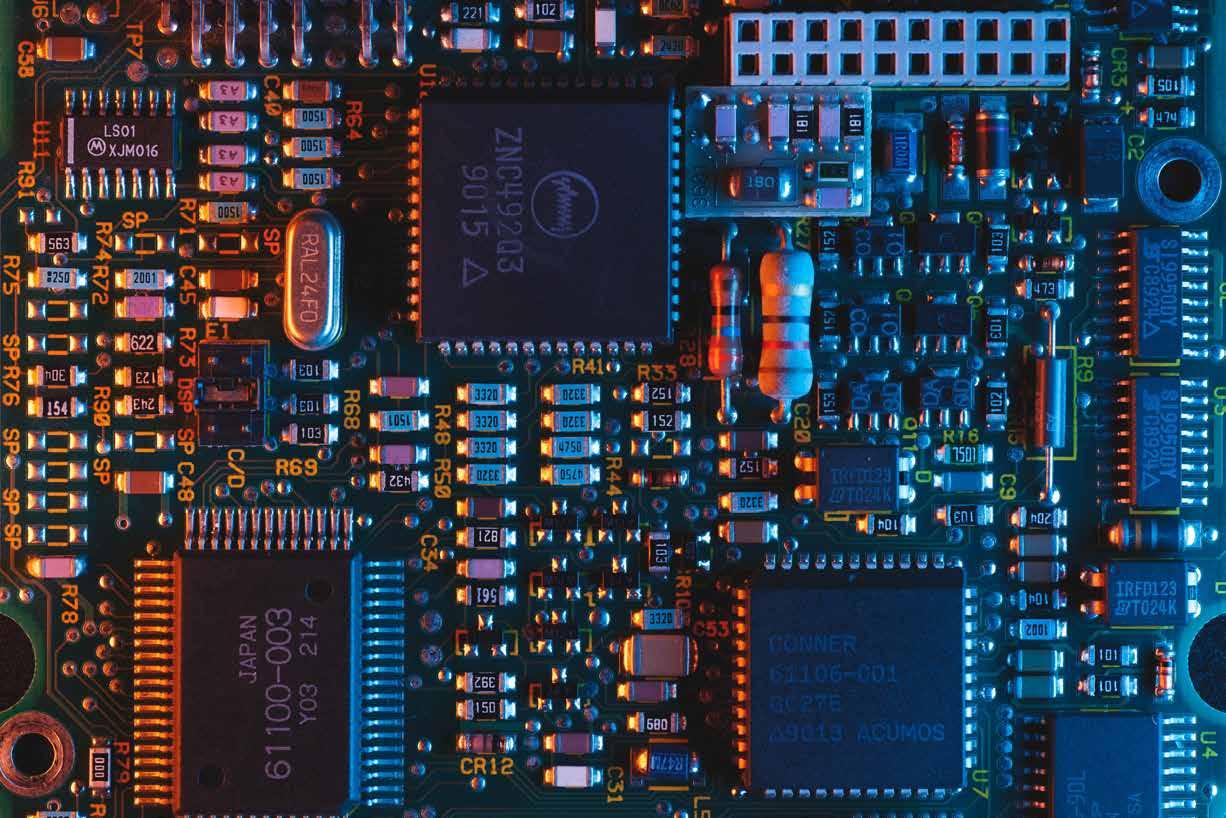
www.famsanet.org 6
of devices, medicines, vaccines, procedures, and systems developed to solve a health problem and improve quality of life." Rapidly changing medical technology and the availability of high technology diagnostic and therapeutic equipment have revolu tionized how health care is being delivered today. Without a doubt, medical technol ogy is indispensable for people's health and better quality of life.
All over the world, technological innovation, industrial growth, and improved living standards are mostly fueled and aided by the government or its policies, with a decent amount of the nation's resources dedicated to these causes. Unfortunately, in Africa, the government bodies do not pay adequate attention to the healthcare sector. However, in recent times, there have been great steps taken to improve the state of the sector.
The future of health care in Africa depends on innovation. The adoption of modern technology can create opportunities to improve the African healthcare sector. The COVID-19 pandemic was a catalyst for growth in health tech on the continent. Now, entrepreneurs and governments must sustain the generated momentum. Globally, the future of healthcare is shaping up with advances in digital healthcare technolo gies. Out of a myriad of tech still produced, a few include:
mHealth: utilizes Short Messaging Service (SMS) and Mobile Applications for health services and information.
Wearables with wireless communication tracking information on a real-time basis. Telemedicine which involves an interaction between a healthcare provider and a patient when the two are separated by distance. Cloud storage: The practice of storing and computing health data remotely over the internet.

Artificial Intelligence: The simulation of human intelligence in a digital computer. 3D printing to create personalized medications, orthopedic implants, and prostheses. Augmented Reality, where MRI images are converted to 3D images used to study.
Medical technologies allow for more efficient and accessible healthcare facilities, enabling earlier and more accurate diagnosis of diseases, remote monitoring of patient conditions with easy access to patient medical reports facilitating timely intervention, and improving overall outcomes.
However, even modern-day technology and innovations come with certain import ant issues. Some of these innovations increased costs for healthcare providers and patients. There is also a bigger risk of serious security breaches due to data sharing, as well as a high chance of frustration if technology fails.
Despite the obvious concerns, the benefits of technology in healthcare outweigh the negative effects. For this reason, it is important to look at how technology may be best employed in African healthcare.
www.famsanet.org September 2022 Edition FAMSA Newsle er 7
Current technologies are incorporating mobile technology and Internet-based solu tions into healthcare in Africa. With a vast increase in mobile internet usage in
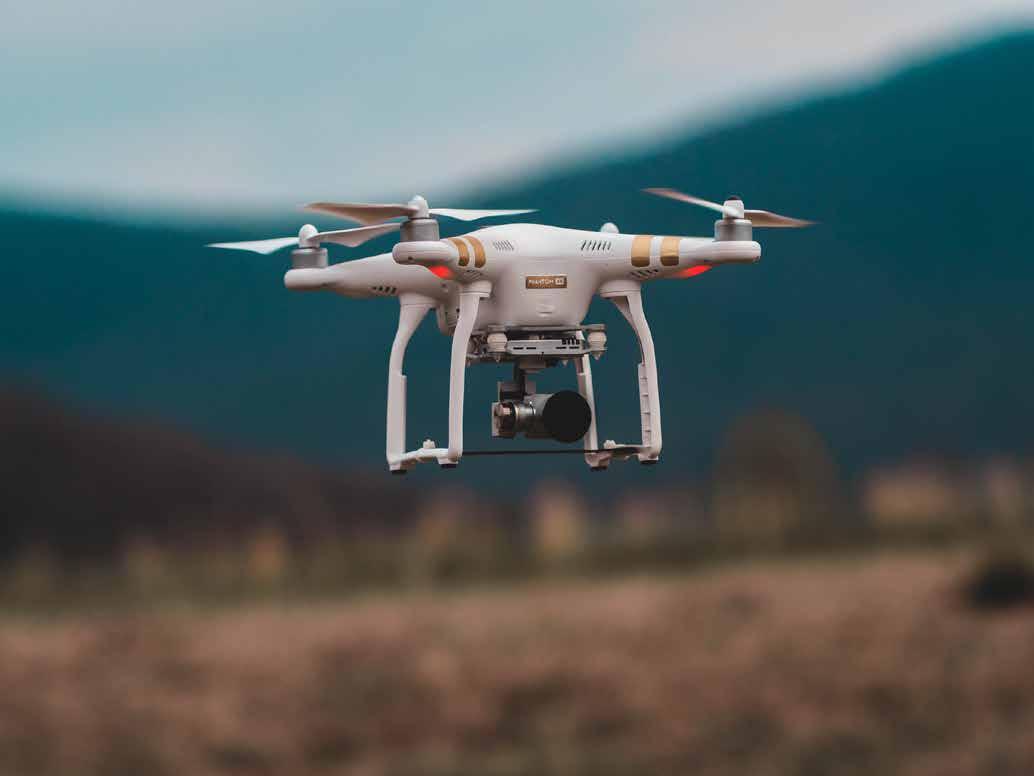

www.famsanet.org September 2022 Edition FAMSA Newsle er 8
Sub-Saharan Africa, applications that enable remote access to medical advice and diagnosis are popping up across the continent.
In Rwanda, Zipline delivers vaccines, medicines, and blood supplies to anyone who needs them on time, no matter how hard it is to reach them through drone technolo gy due to scattered demographics and remote villages. Also, in Ghana, they help deliver ordered medical products to any destination within 30minutes.
Other innovative technologies are making their footprints, as well. The SANBS (South Africa National Blood Service) project uses drones to deliver and collect blood. This project aims to overcome the skill gap problem in rural areas.
Pelebox, a smart locker system developed by Hutiri in South Africa, dispenses medi cine to patients with chronic illnesses. When the medication is ready, patients receive an SMS message with a unique code that opens the locker. This enables patients to collect their repeat chronic medication in under 22 seconds instead of waiting for hours in queues at public clinics. Omomi, a smartphone application, helps pregnant women and mothers in Nigeria monitor their children’s health and chat with doctors on a pay-as-you-go or subscription basis.
In Uganda, Matibabu has developed a tool to diagnose malaria with no blood sam ples. It clips on a finger, and by shining a red beam of light on the skin, it can detect Plasmodium (malaria-causing parasite in RBCs). The results can then be viewed via an app with an 80% accuracy within two minutes. This makes diagnosis less time-consuming and easier, as it usually does not require access to a health clinic. Hello Doctor in South Africa provides essential healthcare information, access to advice, and a call back from a doctor.
MEASURES PUT IN PLACE TO PROMOTE THE ADOPTION OF TECHNOLOGY IN MEDICINE IN AFRICA
Some of the measures being put in place to ensure the adoption of technology in medicine in Africa include:
Investments in infrastructure development
Several million-dollar investments have been made in collaboration with internation al organizations, such as Melinda Gate Foundation, Rockefeller Foundation, Rotary International, and World Bank. These organizations have made efforts to introduce adequate access to technology in medicine in Africa by donating and encouraging their use. (Abayomi, Owolabi Kehinde et Al, 2019)

www.famsanet.org September 2022 Edition FAMSA Newsle er 9
er

Incentives to user groups
Incentives aim to reward users for com pleting certain actions, thereby causing them to be motivated and make stron ger commitments to achieve certain goals ensuring better performance. (Abayomi, Owolabi Kehinde et Al, 2019)
CHALLENGES ENCOUNTERED IN THE EXECUTION OF TECHNOLOGY IN MEDI CINE IN AFRICA
Some of the challenges encountered in the execution of technology in medicine in Africa include:
Weak financing systems
Most countries in Africa are developing countries faced with challenges in their financing systems in healthcare. These challenges include a lack of resources to equip health institutions with modern technologies, which negatively affect technology implementation in medi cine. (Furusa et Al, 2018). This is further exacerbated by a lack of appropriate allocation to healthcare in annual bud gets.
Insufficient infrastructure and lack of technical expertise
Poor infrastructure coupled with inade quate training of health practitioners invariably affects technology implemen tation in medicine.
Health policy
There is a lack of clearly defined poli cies to support the use of advanced technology in public hospitals in Africa, which impedes the implemen tation of up-to-date technology at all levels of healthcare. (Furusa et al, 2018)
Bureaucracy:
The systems of authority present in the health sectors of African countries are often rigid. For example, the health ministry determines all technology deployment in hospitals. (Furusa et al, 2018). Hospitals have no right to intro duce technology systems inde pendently. This suppresses creativity and innovation and, likewise, the implementation and adoption of tech nology in the medical field.
THE WAY FORWARD: HOW TO PROMOTE TECHNOLOGY ADOPTION IN HEALTHCARE IN AFRICA
To promote adequate adoption of technology in medicine in Africa, the following measures should be consid ered:
Funding mechanism
Each country is encouraged to take concrete actions to allocate at least 1% of its GDP to research and technology development. There should be increased adoption of domestic and alternative financial resources to
www.famsanet.org September 2022 Edition FAMSA Newsle
10
reduce over-reliance on external resources.(STiSA-2024, 2014)
Technical competencies:
It is important that health practi tioners become “techno-literate”. These can be promoted by health training sessions to advance knowl edge and skills about technology. This is essential for successful adoption and implementation.
Inclusion of the latest technologies in the medical curriculum
Doing this will lead to the acceptance and utilization of such technology because of the identification and appreciation of such technology in their workplace. (Barteit et Al, 2019)
Communication and publicity (STISA-2024, 2014)
Communication and outreach on technology are essential to secure necessary political buy-in at the gov ernment level, raise wider public awareness at the grassroots level, and garner support from all key stakehold er groups. Public appreciation of these technologies is important for success fully implementing policies and pro grams at national, regional and conti nent levels. (STISA-2024, 2014)
Enabling environment (STISA-2024, 2014)
An enabling environment is needed
for the adoption and implementation of health innovation. According to WHO, an enabling environment is defined as the attitudes, actions, poli cies, and practices that support the effective and efficient functioning of organizations and programmes. This includes leadership, workforce capaci ty, socio-cultural considerations, infra structure, etc.
Relevant policies
Policy refers to law, regulation, proce dure, administrative action, incentive, or voluntary practice of governments and other institutions (Centers for disease control and prevention,2015). With the right policies, countries would record marked improvement in health technology adoption. Some of these policies are:

Encouragement of public and private payers to provide financial incentives to institutions for adopting and imple menting technology in healthcare. (Poon, Eric G. et al, 2004) Provision of access to capital through loans or grants to help hospitals over come the initial cost barrier. (Poon, Eric G. et al, 2004) Supporting research that addresses the barriers to the adoption and implementation. (Poon, Eric G. et Al, 2004)
CONCLUSION
Effective and efficient adoption and implementation of technology in medicine will promote effective
www.famsanet.org September 2022 Edition FAMSA Newsle er 11
er

healthcare delivery. This will help address healthcare challenges in Afri can countries, promoting a healthier Africa.
References
Abayomi, Owolabi Kehinde, et al. "Fac tors Influencing The Adoption Of Clini cal Informatics Tools Among Medical Doctors In South Africa". SRELS Jour nal Of Information Management, vol 57, no. 3, 2020, p. 122. Sarada Rangana than Endowment For Library Science, https://doi.org/10.17821/s rels/2020/v57i3/149658.
Furusa, Samuel S., and Alfred Cole man. "Factors Influencing E-Health Implementation By Medical Doctors In Public Hospitals In Zimbabwe". SA Journal Of Information Management, vol 20, no. 1, 2018. AOSIS, https:// doi.org/10.4102/sajim.v20i1.928.
Poon, Eric G. et al. "Overcoming Barri ers To Adopting And Implementing Computerized Physician Order Entry Systems In U.S. Hospitals". Health Affairs, vol 23, no. 4, 2004, pp. 184-190. Health Affairs (Project Hope), https:// doi.org/10.1377/hlthaff.23.4.184.
"Recommendations On Digital Inter ventions For Health System Strength ening". Who.Int, 2022, https://ww w.who.int/publications-detail-redi rect/9789241550505.
Centers for disease control and pre vention. 29th May 2015. 31st May 2022.
www.cdc.gov/policy/analysis/pro cess/definition.html
STISA-2024, June 2014.
Barteit S, Jahn A, Banda S, Bärnighau sen T, Bowa A, Chileshe G, Guzek D, Jorge M, Lüders S, Malunga G, Neu hann F E-Learning for Medical Educa tion in Sub-Saharan Africa and Low-Resource Settings: Viewpoint J Med Internet Res 2019;21(1):e12449
URL: https://www. jmir.org/2019/1/e12449
DOI: 10.2196/12449
www.famsanet.org
September 2022 Edition FAMSA Newsle
12
TERRORISM AND ITS MEDICAL IMPLICATIONS
 By: Akinjare David, Akinjobi Oluwagbemisola, and Osaretin Ehiorobo, University of Ibadan Medical Students' Association.
By: Akinjare David, Akinjobi Oluwagbemisola, and Osaretin Ehiorobo, University of Ibadan Medical Students' Association.
"I'm in the train," Ms. Nwando wrote on Twitter shortly before 10 p.m on March 28, 2022. "I have been shot, please pray for me." These were the last words of Ms. Chinelo Nwando, one out of approximately 970 passengers of the Abuja-Kaduna train which was attacked earlier this year, leaving at least eight people killed, twenty-six injured, and an unknown number missing.
www.famsanet.org 13
Yet this is only one out of a series of like attacks — abductions of school chil dren, killing of villagers, kidnappings for ransom, hijacking of farmlands, and suicide bomb attacks — which have become the new normal in Africa. In July 2009, Boko Haram staged a failed uprising against the Nigerian govern ment, which killed 800 people and marked the beginning of more than a decade of terror. Between 2013 and 2015, they killed more than 11,000 people and held more than 276 sec ondary school girls of Chibok and Dapchi, towns in Borno and Yobe states respectively, in captivity, some even to this day. According to Statista.com, Nigeria and Somalia are the countries most affected by terrorism in Africa regarding attacks and loss of lives. Fur thermore, Nigeria has recorded 4,383 terrorist attacks, with Somalia counting 1,923.
Terrorism is no longer new to us. It is almost impossible to go through the news without coming across the word. Driven by violence, intimidation, and misguided ideologues, it is one of the major problems threatening Africa and the world today. But despite being a major threat to realizing global peace and prosperity, terrorism remains yet to be solved, even by the world's most powerful economies.
One of the most devastating, some times neglected, aftermaths of terror ism is how the health statuses of resi dents of such areas are affected. According to researchers from New
York, a 28.8% increase in substance use (tobacco, marijuana, and alcohol con sumption) was reported among Man hattan residents a few weeks after the September 11 attacks. Several research papers also show that internally displaced children in sub-Saharan Africa are at an increased risk of mental health problems and infectious diseas es. Terrible though they are, these are only snippets of the myriad effects of terrorism on health and healthcare. In this article, we will examine more of these effects, with a view to under standing how we can improve the situ ation for people in these areas.
TERRORISM: EFFECTS ON HEALTH CARE DELIVERY

Terrorism has at its core an intent to sow feelings of dread into the hearts of people. This is done through acts of violence capable of causing harm to the overall health and wellbeing of people. Cases of kidnappings or hos tage situations expose victims to trau matic experiences, leading to soft tissue injuries and somatic pains like headaches and body pains. Violent acts like mass shootings, car bombings, and suicide bombings often lead to loss of life or cause life-threatening injuries like gunshot wounds, burns from explosions, and fractures from dam aged buildings. Victims also suffer from injuries to body parts that can lead to disability.
The effects of these terrorist acts also extend to their victims' mental health.
www.famsanet.org September 2022 Edition FAMSA Newsle er 14
The trauma from these kinds of attacks has been shown to cause mental health disorders in people. A report listing the Top 10 Certified Conditions of the World Trade Center Health Pro gram in 2016, which included respon dents and survivors of the 9/11 attack, showed that mental illness ranked second among health conditions they suffered. Some of these illnesses may include Post-traumatic Stress Disorder, depression, and generalized anxiety disorder. This may also influence the behaviours of victims and the daily functioning of the population. This is supported by research showing that Americans reported symptoms such as difficulties concentrating at work or in school, disrupted sleep, and feelings of fear, anxiety, and anger after the 9/11 attack. Ultimately, the implications of terrorism affect all aspects of one's well being.
Terrorism may also hinder the effective practice of medicine in affected regions. For one, it reduces the access residents of such areas have to health care due to damage to medical sup plies and equipment. The WHO Regional Director in Africa, Dr. Matshi diso Moeti, revealed in a discussion that over half the population in South Sudan, an area that has witnessed acts of terrorism, lacks access to functional health facilities. Also, in the Central Afri can Republic, nearly a quarter of health facilities have been totally or partially destroyed. Northern Nigeria is also on this list, where nearly two-thirds of the 743 health facilities in Borno State in
Nigeria were destroyed or damaged as of 2016. These areas are notorious for increased levels of insecurity due to terrorist attacks. Because of this, the residents suffer from a lack of quality healthcare due to non-existent or dilap idated facilities.
In addition, the increasing number of trauma cases due to terrorist attacks puts a strain on the already poorly equipped medical structure in affected regions. The usually bloody aftermath of terrorism puts a large amount of pressure on healthcare workers, which may affect them physically and psycho logically, thereby reducing their pro ductivity. In the same vein, the unat tractive nature of practicing in these regions can cause health workers to leave and discourage other health practitioners from coming to work there.
CHALLENGES TO HEALTHCARE DELIV ERY IN AREAS AFFECTED BY TERROR
ISM

Areas affected by terrorist acts have one of the highest needs for health intervention. However, a number of fac tors, many precipitated by the acts of terrorism themselves, hinder health care access to these areas. It is import ant to examine some of these factors.
Insecurity and instability
Terrorism and terrorist attack have caused the stability of nations, commu nities, and societies affected by these
www.famsanet.org September 2022 Edition FAMSA Newsle er 15
attacks to plummet. General insecurity and instability of such places have caused a large gap between health professionals and patients who need immediate health care. Freedom of movement to hospitals has also become restricted due to attacks from terrorist groups. As a result, health ser vices are being compromised, as reported in the Central African Repub lic, where only half of the laboratories, 11% of blood banks, and 20% of ARV ser vices are functional.
Militarization and politicization of healthcare
Due to the destruction of social ameni ties and increased insecurity by terror ist groups, the government usually needs to ensure that its citizens are kept at peace. Therefore, military groups are usually dispatched. These military groups need bases to store their ammunition, and health struc tures such as hospital basements could be used for these purposes. This, in turn, traumatizes the patients, their visiting relatives, and health profession als on duty.
Often, military personnel set up military bases around the health centres to serve as an extra layer of protection against future attacks. This arrange ment often exposes vulnerable civilians and health workers to being kidnapped and taken as hostages by invading terrorist groups.
Legal and administrative barriers
In the past few years, various countries have seen a trend toward counterter rorism. Laws and policies that can adversely impact the provision of medi cal care have been made. An example of such laws and policies is criminaliz ing support to designated terrorist groups. These laws may appear harm less, but they could be a challenge when medical practitioners are in situ ations where they need to treat a terror ist. This can lead to the harassment, arrest, or prosecution of medical work ers.

Poor governance
Terrorist-infested communities are usu ally associated with less effective, less transparent, and less involved govern ments. Corruption often thrives, as armed groups control the entire popu lace and resources. Most of these groups do not seem to perceive it as in their interest to provide or even allow the provision of health services to pop ulations under their control.
In cases where health services have been approved to be provided by these groups, health personnel is usually not paid or treated well.
Insufficient short-term international funding
As a consequence of poor governance found in terrorized places, there is little to no funding made available by the indigenous government. As a result,
www.famsanet.org September 2022 Edition FAMSA Newsle er 16
International funding is crucial to pro viding health services in terrorism-in flicted communities. An example of such an international response was at the end of 2017 when the United Nations (UN) launched the campaign #UkraineNotForgotten to plead for sup port for humanitarian assistance in Ukraine, where the health needs were dire. However, the disadvantage of such international intervention is its short lifespan which might not be sufficient to cover necessary health challenges in the community.
IMPROVING ACCESS TO HEALTHCARE IN AREAS AFFECTED BY TERRORISM
In the past decade, the United Nations and different countries have built on previous experiences and are develop ing more nuanced approaches to these critical situations. Some methods that have been implemented and are actively helping to improve access to healthcare in areas with terrorist attacks are:
Allocating Assistance
In terrorism cases, the ability to improve the health sector is largely dependent on international funding and assistance allocation. This method determines which countries should receive assis tance and how much the medical inter vention should be. Such intervention is usually made with appropriate consul tations of the countries involved. The

Central Emergency Response Fund of the UN Office for the Coordination of Humanitarian Affairs (OCHA) is a good example of assistance allocators.
Prioritization of Health Services
In addition to funding, governments should prioritize key health issues to bridge the gap in accessing healthcare among the ruins caused by terrorism. With the urgency that terrorism brings, health issues that are usually more pro nounced such as broken limbs or trau mas should be focused on.
Less pronounced health issues such as diabetes or hypertension should also not be overlooked. Healthcare centres should be seen as a necessary asset in terrorist-invaded areas.
Specificity of laws and policies
There is a general need for health laws and policies to be specific in context. Global health policies should consider terrorism-related issues and tailor such policies to fit any situation of terrorist attacks. Health personnel should also be less restricted from treating patients and briefed on local cultures in such areas.
Accountability and transparency
Accountability is the process by which health professionals and government officials justify their actions and use of resources. This opens up a level of trans
www.famsanet.org September 2022 Edition FAMSA Newsle er 17
parency in allocating resources. Accountability is ensured through stringent monitoring and supervision of each level of operation.
It is also necessary for health professionals to be financially accountable. This requires healthcare providers to track and report on how they allocate, disburse and use the funds provided by donors.
CONCLUSION

The health sector faces numerous challenges during an invasion by terrorists. Most of these challenges are beyond what health practitioners can unilaterally

September 2022 Edition FAMSA Newsle er

CHALLENGES FACING MEDICAL STUDENTS IN NIGERIA AND AFRICA AT LARGE Jesutoni Adedotun Omiye, College of Medicine EKSU Also published on MedZoneTV
This is the first article in a research project that deals with ways to improve and positively impact the health care system in Nigeria, and Africa at large.
As the headline indicates, this will be talking about the problems affecting the medical schools, because before we can help the health care system, we have to know the factors hindering the system from actually moving forward. And what is the best way to go about this, which will make us go back to the foundation, that is, the Medical schools where the future and present medical doctors were/are being trained?
Challenges facing medical schools, can't be overemphasized. But before going into it, let us first of all look into the meaning of some of these terms; education, learning, medicine, and medical school
Education is a discipline that is con cerned with methods of teaching and learning in schools or school-like envi ronments as opposed to various non formal and informal means of social ization (e.g., rural development proj ects and education through par ent-child relationships).
While Learning is “a process that leads to change, which occurs as a result of experience and increases the poten tial for improved performance and future learning” (Ambrose et al, 2010, p.3). The change in the learner may happen at the level of knowledge, atti tude, or behavior. As a result of learn ing, learners come to see concepts, ideas, and/or the world differently. Medicine is a broad term for a variety of practices evolved to maintain and

restore health by the prevention and treatment of illness, including phar maceuticals, psychotherapy, and sur gery.
While a medical school is a tertiary educational institution, or part of such an institution, that teaches medicine, and awards a professional degree to physicians and surgeons. Such medi cal degrees include the Bachelor of Medicine, Bachelor of Surgery (MBBS, MBChB, MBBCh, BMBS), Master of Medicine (MM, MMed), Doctor of Med icine (M.D), and Doctor of Osteopathic Medicine (D.O)
WHAT IS THE ESSENCE OF MEDICAL SCHOOL?
It is for students to study medicine and become doctors; the main skills students learn are to help people end their suffering.
It prepares graduates so they can enter and compete in medical educa tion, qualify for medical licensure and provide competent medical care.
It is to produce competent medical researchers that research in their field and make their findings available to the world. And lots more
If the problem of a matter is known, then the solution is not far from it. If there is a challenge and a problem in our medical school how do you expect the medical students to be able to do and show forth what they have been made for?
The factors that will be listed here, were taken from a real-life situation, and not from Google or the Internet. I was able to talk to medical students from different medical schools, here in Africa to know their present issues, compile them, and will be talking
www.famsanet.org September 2022 Edition FAMSA Newsle er 19
er

about them here.
Starting from my home country here: Nigeria. I was able to discuss with four (4) different students from Medical Students Association (MSA) across the country. These were; the University of Abuja MSA, Olabisi Olabanjo Universi ty MSA, Ekiti State University MSA, and the University of Uyo MSA… Moving out of Nigeria, I was able to get in touch with students from two other MSA in Africa, which were; the Univer sity of The Gambia Medical Students’ Association (UniGAMSA), and the Medical Students Association of Kenya (MSAKE). I got a lot of issues, and problems affecting each of the different MSA mentioned above, and will be listing the most common and frequent ones in this article.
THE CHALLENGES
1. TIME
Time has always been a challenge to all students, but to medical students, it’s the worst challenge. This is because medical students’ hours for taking lectures sometimes start from 9:00 AM to 5:00 PM and to prevent being left behind, they usually read ahead of teachers. A senior medical student once told me that, before they started lectures in Part 2, he has read almost half of the anatomy textbook. But when they resume, the lecturer covered all he read in three days & before he knew it he had loads of work to cover up. Also, a medical student in EKSU COM gave another viewpoint, saying that "many of us have spent seven (7) years in this institution and still have more
than a year to go, some will spend more than eight(8) before graduation. It's challenging to maintain the level of enthusiasm we came in with."
While medicine students at Uni Abuja gave it a different note and tagged it the “marathon system in medical school” with no room or time to rest.
2. FEAR OF FAILURE
Most medical students have this fear of failing. They’ll be afraid that they’re not studying enough, though they’re trying their best. Some develop the fear of failure when they see their col leagues failing. They’ll be like: “This person studies more than I do, but he has been withdrawn. What will happen to me too?” Such thoughts will make the person develop a fear of failure, which many medical students are facing!
And I also talked to a student of EKSU COM, who said that "we medical stu dents do not read because we so much love medicine but we read out of fear so that we would not fail and miss out." Which we know has replaced the real intention of studying a course.
We hear cases of repeating and with drawal from the medical school; "a situation that makes 300level stu dents go back to 200level, this strikes fear in us and makes us read in fear."
3. MEDICAL TERMINOLOGIES
You might be wondering, how can this be a challenge? Yes, it’s a big chal lenge as there’s one doctor that told me, that pronouncing Medical Termi nologies & spelling them is the big gest challenge she faced in Medical school.
www.famsanet.org September 2022 Edition FAMSA Newsle
20
OOU COM, a student narrated how he nearly failed Anatomy in the 2nd year due to terms he was not familiar with. He said as quoted: "At first I didn't understand some anatomy terms during my 2nd year because it was new to me, I had to first cram those big terms, but it did not help when I crash-read during exams; it almost made me fail."
4. COST OF SCHOOLING
A student at the EKSU COM also shared a similar experience, about one of their colleagues that wanted to quit Medicine in their 5th year because of the hike in price. "Paying more than half a million for tuition, when we still have other things to get, like feeding, textbook, health, and other personal needs,” was narrated by the student. Also from Uni Abuja College of medi cine, a medical student said some thing similar "price of school fees keep increasing every year, and there is no increase in the salaries or income of our parents, my parents had to apply for a loan and they need to pay back before the can get another one, now that school fees keep increasing, am starting to become more afraid and thoughts of dropping out do come to my mind sometimes." Finance is a challenge to every stu dent, in Medical school, and this case is the same. From the very start of becoming a student-doctor, financial challenges will be with you for a con siderable time. For one, the course itself is long & expensive. Without ade quate financial support, prior plans & strategies, overcoming the financial challenge will be very difficult In Medi cal school. Unlike other students,
Medical students are always busy with Studies, This makes it hard if not impossible for them to do side hustle along with schooling. This ultimately makes finance a great challenge to them.
5. LACK OF ADEQUATE FACILITIES
This problem is more common in the preclinical section of medical schools, with less provision of facilities that help in good learning conditions like standard accommodations, lack of adequate classrooms and lecture the atres, and lack of standard laborato ries for preclinical curriculum.; the same issues are found in EKSU COM, Uni Abuja COM, and OOU COM and beyond Nigeria, Kenya COM.

6. BRAIN DRAIN OF COMPETENT RESIDENT DOCTORS AND LACK OF LECTURES
"When the good and gifted lecturers that should develop us have all relo cated overseas to seek greener pas tures, then how do you want us to come out exceptional. It's not possible, because nobody is an island, we all gain knowledge from all spheres." This statement was made by a student in one of the Medical schools in Kenya. And also Uni Uyo Com and OOU COM said the same thing: "We call on the Government and anybody concerned to please improve the wages of our doctors, and lecturers because we eventually become what we are taught. If we are taught by incompe tent then society should be ready for quack medical doctors.”
7. LACK OF PROPER REPRESENTATION
For an organization to be in good shape there must be good leadership
www.famsanet.org September 2022 Edition FAMSA Newsle er 21
and followership. Though medical school is not an organization, as long as it has people and boards governing then it's more or less like an organiza tion.
Uni Abuja COM students came out strong by saying "Our student repre sentatives have been disbanded, there are no more people to represent and protect our interest, we have been made to keep mute and enjoy any thing done to us. Even if it's affecting us, feedback is necessary but when we don't have a voice again who can tender our pains." Oh! what a painful heart.
A student from one of the Kenyan medical schools said: "Though we have a body that represents us, they are not always included in deci sion-making, which is not that fair."
8. LACK OF SPECIAL GRANTS LIKE HEALTH INSURANCE AND SCHOLAR SHIPS
COVID-19 is a pandemic that made the health sector of Nigeria and Africa know they were not that improved. But kudos to our brave medical practi tioners, that stood and fought it. "But clinical students were not given much consideration when it comes to health insurance during those times. They were not given enough PPEs and other things and some were exposed to COVID," said a Kenyan medical school student
9. STRESS AND HIGH WORKLOAD
This is one of the challenges faced by many Medical students because, as a highly demanding course, the causes of stress in Medicine are many. And they, unfortunately, affect both the physical & psychological health of the students.
The major cause of stress among
medical students is that they learn the already demanding coursework in a short amount of time, then undergo successively tougher exams with the fear that if they fail, that will bring about their end in Medical school. The urge to meet the demands of their curriculum inhibits a sense of urgency in them as they struggle to work harder & try their best. There’s also high stress among medical stu dents after their graduation when they start training.
10. ACCOMMODATIONS

A student of EKSU COM also spoke about his view and challenges in med ical school, same as OOU COM, the student simply said lack of hostel and resident problems:
"While in preclinical, there is no hostel for medical students, have you walked from the college to the school gate before? It's just too far. Besides mixing with other students off-campus, it doesn't create a conducive learning environment.".
CONCLUSION
There are more problems than what’s been pointed out in this write-up, if I was to go around Africa at large, then I would have met some more medical students that would have expressed their problems.
I plea to the government and other bodies both private and public para statal to look into the grief and pain of these students because they are the future and the next generation of Medical practitioners In Nigeria and Africa at large. The solutions and possible ways out to this problem and issues will be listed In the next article. Always committed to seeing a change and I will start one in my little way.
www.famsanet.org September 2022 Edition FAMSA Newsle er 22
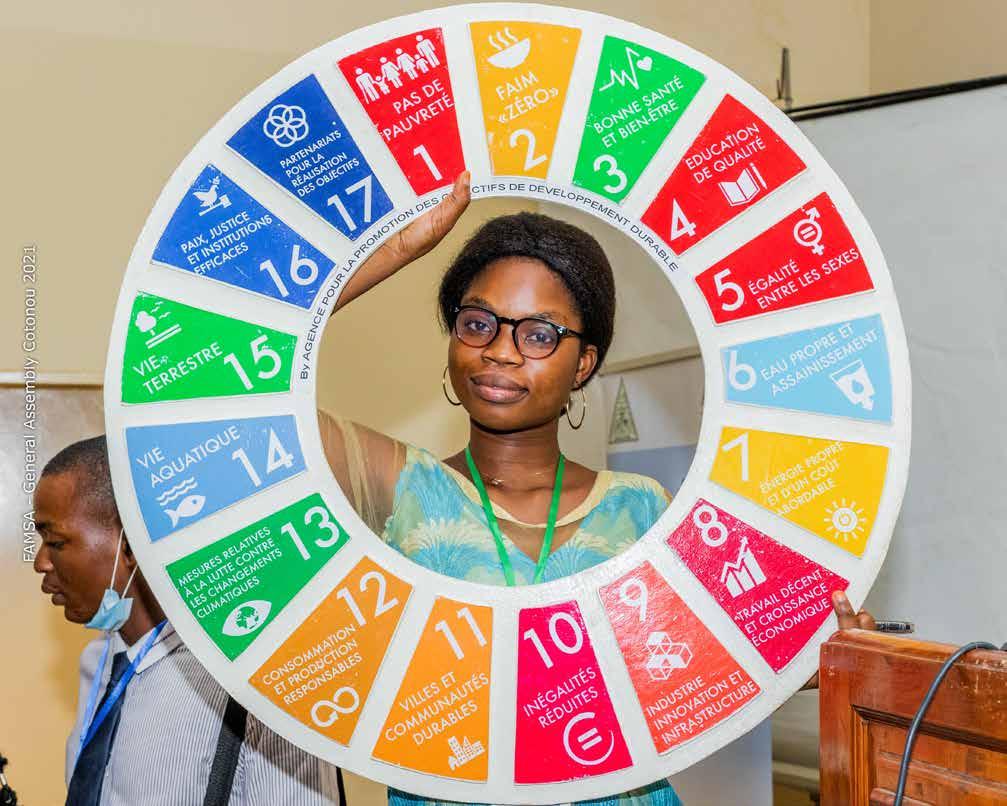

35TH FAMSA GENERAL ASSEMBLY 2021: CONTONOU, BENIN REPUBLIC www.famsanet.org 23
Speaker: Professor Dorothée KINDE-GAZARD, former Minister of
Topic: ’’Women and the Medical Profession: Challenges
The medical profession feminization is universally increasing. The proportion of female medical doc tors continues to increase. This is often seen as a success for feminism. Yet female physicians face gender-specific barriers to professional and academic success, resulting in disproportion ate rates of burnout and negative effects on their career path. According to the Professor, the main challenge of the female doctor is success in her career and her marital life. She must stands out positively in the city and build a good reputation day by day.
SCIENTIFIC CONFERENCE N° 2
Speaker: Dr Célestin AGBESSI, emergency Doctor, Assistance publique – Hôpitaux de
Topic: ’’Impact of Covid-19 on healthcare and medical training in Africa’’
The COVID-19 pandemic has put a strain on the already fragile health systems of African countries, leading them to extemporaneously invent new adaptive solutions. Much progress is still needed to rebuild the health systems of

SCIENTIFIC CONFERENCE N° 3
Professor Eugène ZOUMENOU, Professor of Anesthesia-In tensive Care and Vice-Dean of the Faculty of Health Sciences of
The representative of Ipas in Benin, Mr SORO Aboudou
Topic: ’’Maternal mortality in Africa: causes and avenues for reduction’’
Maternal mortality is defined as the death of a woman during pregnancy or within 42 days after the end of the pregnancy, regardless of the method of termi nation, duration, location, for a period of any cause determined or aggravated by

www.famsanet.org September 2022 Edition FAMSA Newsle er 24
of hypertension associated with pregnancy and infections.
SCIENTIFIC CONFERENCE N° 4
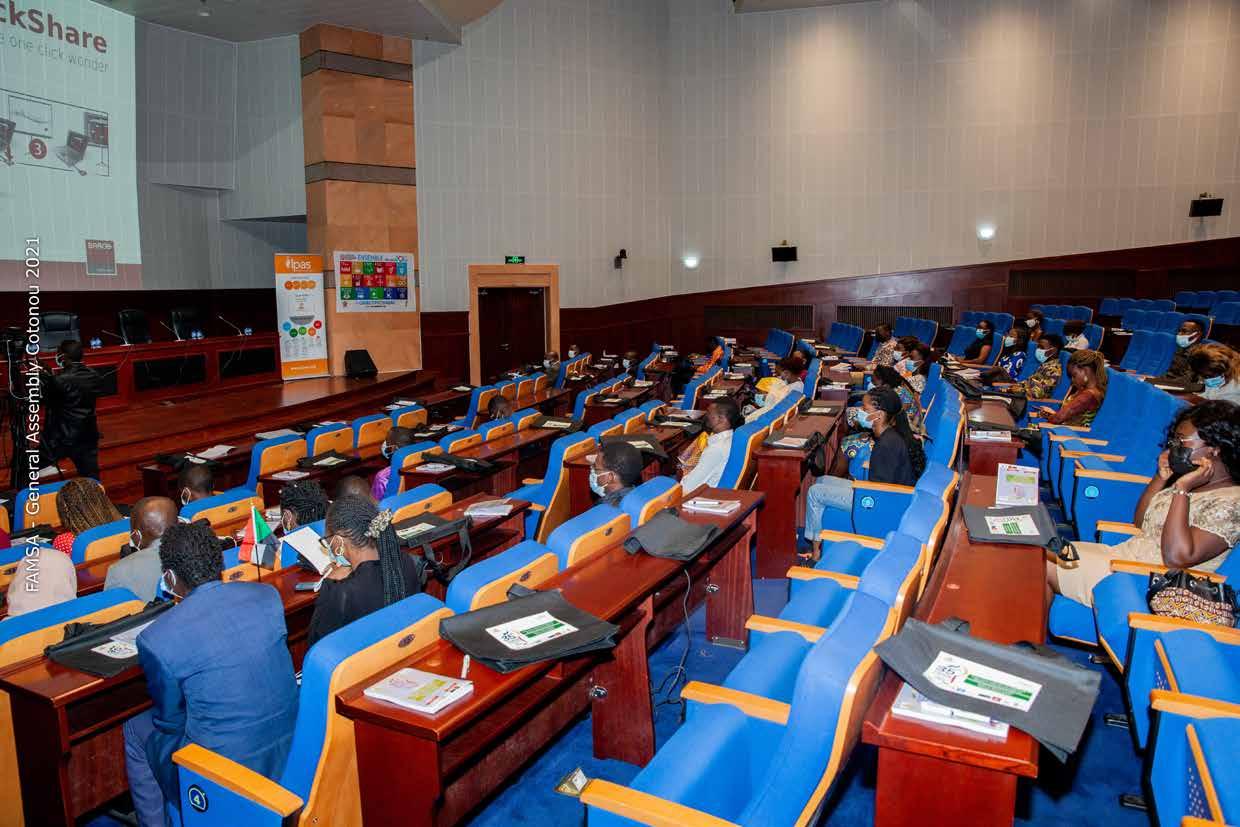
Speaker: Doctor Mystère DJENONTIN
Topic: ’’Basics of addictions’’
Addiction is defined as a chronic, relapsing disorder characterized by compulsive drug seeking, continued use despite harmful consequences, and long-lasting chang es in the brain. It is considered both a complex brain disorder and a mental illness.
www.famsanet.org 25
SCIENTIFIC CONFERENCE N° 5
Speaker: Doctor Marinelle HOUNGBEDJI
Topic: ’’Health professionals and mental health’’
The mental health status of health professionals strongly influences the quality of care provided. Yet anxiety, depression, sleep disorders and stress are ailments that undermine the lives of caregivers on a daily basis. This is even more accentuated by the advent of the Coronavirus pandemic which has shaken the world since Decem ber 2019
Her presentation focused a lot on the factors that promote stress among health pro fessionals, means of prevention and avenues for management.
SCIENTIFIC CONFERENCE N° 6
Speaker: Doctor Razack ANDEMI
Topic: ’’ Technology place in achieving SDG 3’’
The world has entered an era of digitization of all areas. The health sector cannot remain on the sidelines of this era and could even contribute to its development in Africa. However, many reluctance can be noted because of the sensitivity of the issue of human health with the constraints of preserving privacy, the need for care-patient contact.
SCIENTIFIC CONFERENCE N° 7
Speaker: Doctor Hashim HOUNKPATIN, Entrepreneur and Former FAMSA West Africa Regional Coordinator.
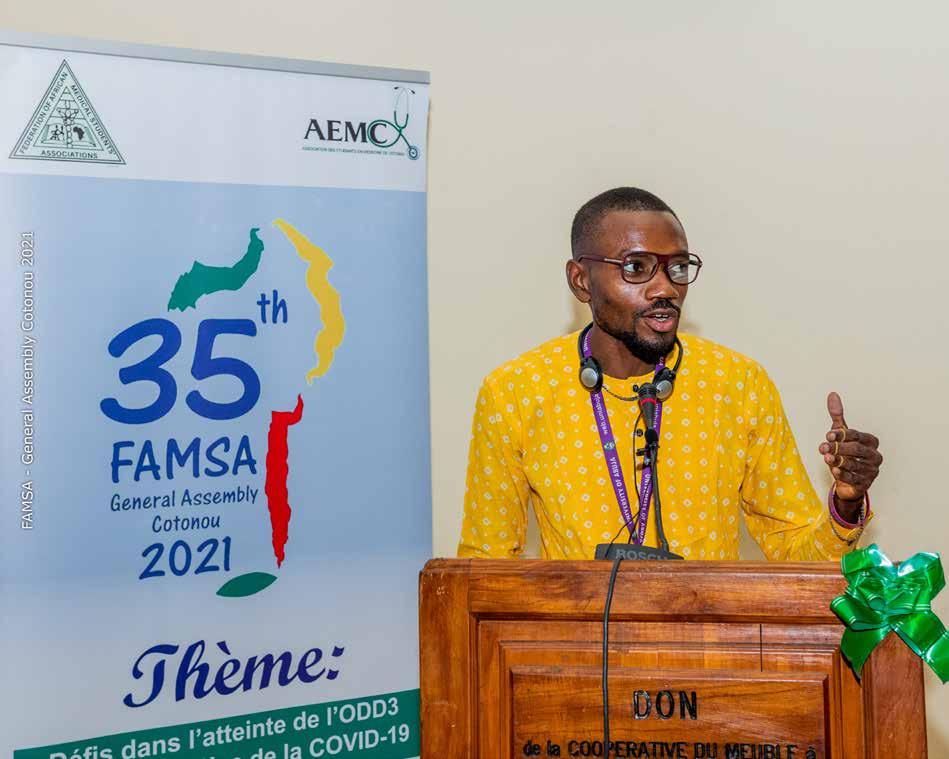
Topic: ’’ Leadership and entrepreneurship in medicine Leadership and entrepreneur ship in medicine’’
The relationship between medicine and entrepreneurship has never been so debated as it is today. Leadership is today a must for a medical student who wants to be in decision-making positions and who wants to participate in positively impacting his community.
www.famsanet.org 26
Speaker: Mr Loukman Abdel Aziz TIDJANI, Project manager, Advisor in Engagement, Resource mobilization and advocacy for organizations. Topic: ’’Collection of demographic statistics and their contribution to achieving SDG 3 to achieving SDG 3’’
The 3rd SDG aims to ensure the health and well-being of all, by improving reproduc tive, maternal and child health, reducing communicable, non-communicable, envi ronmental and mental diseases. To achieve this objective, it is imperative to have up-to-date data on each group of the population in order to determine the problems they are facing and to implement the appropriate measures. The data also make it possible to ensure proper monitoring of policies already in place.
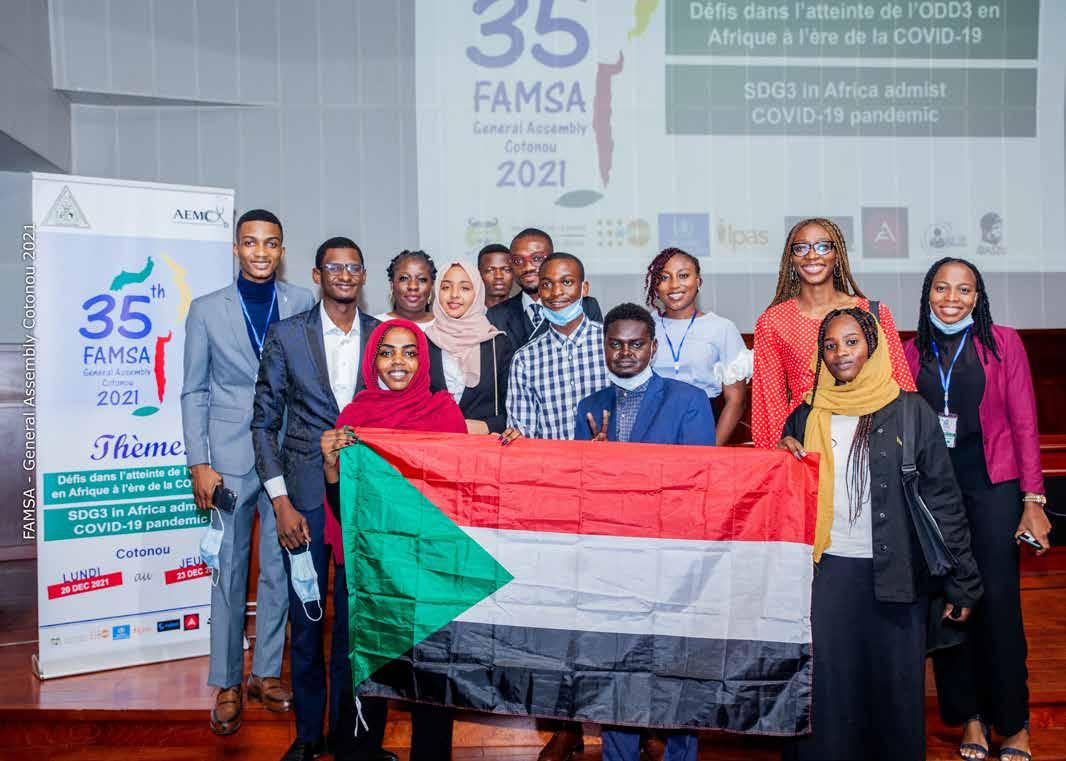
www.famsanet.org 27 SCIENTIFIC CONFERENCE N° 8
Gala




www.famsanet.org September 2022 Edition FAMSA Newsle er 28
Dinner
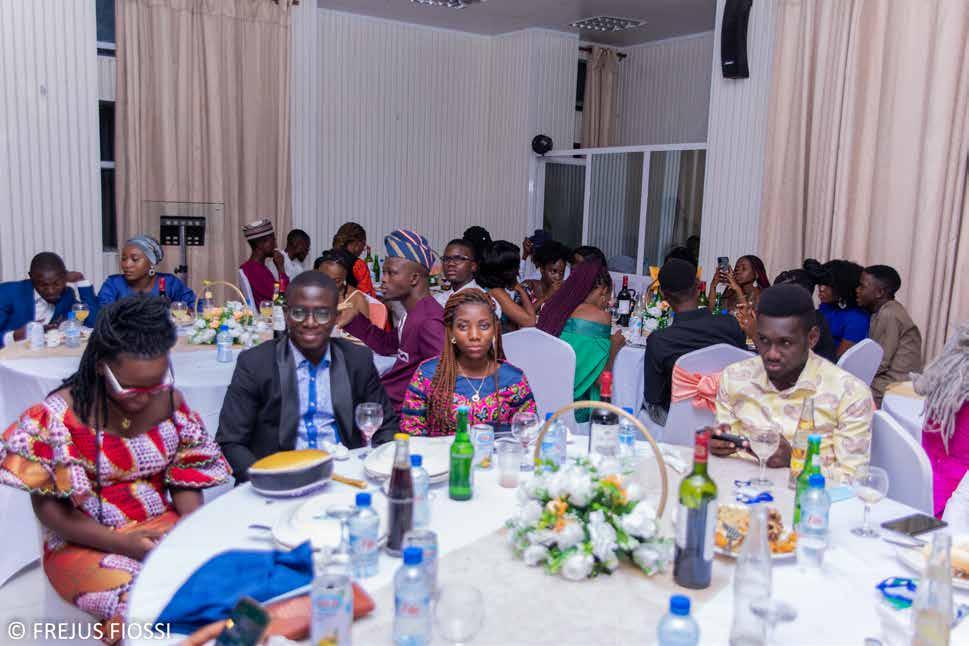

www.famsanet.org 29
Tourist Visit
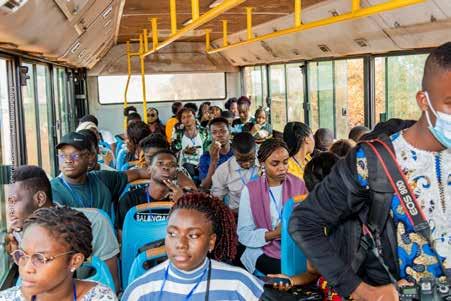
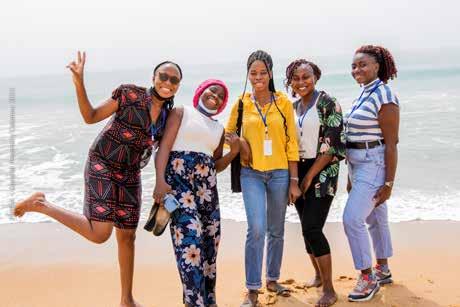

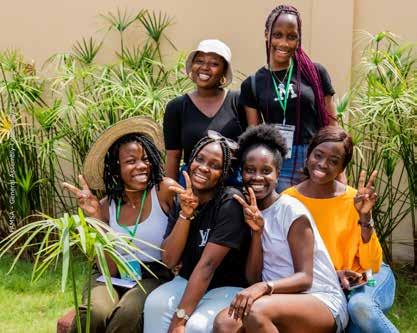

www.famsanet.org September 2022 Edition FAMSA Newsle er 30
Tourist Visit

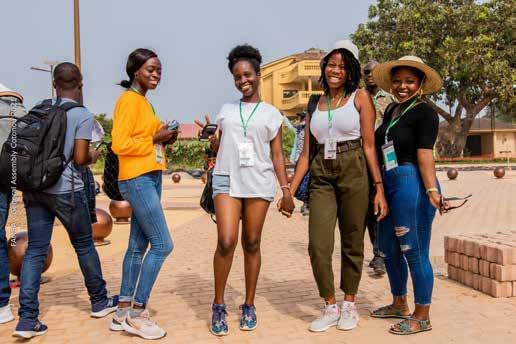
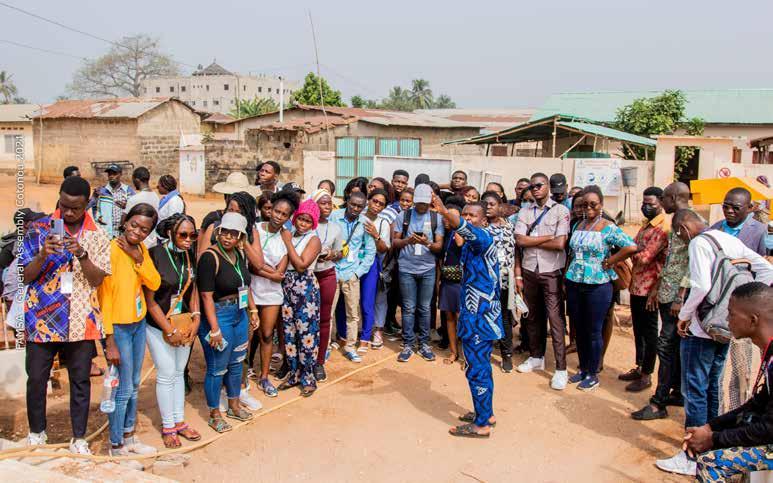

www.famsanet.org September 2022 Edition FAMSA Newsle er 31
OPPORTUNITIES FOR MEDICS
The Federation of African Medical Students’ Associations (FAMSA), since its inception in 1968, has had the vision to build a strong network of medical students who are aware of global health issues and are responsive to current issues facing the medical profession and healthcare, especially healthcare in Africa. The Federation, through its Executives, remains committed to the service of its members in achieving this goal. FAMSA has five main focus areas which are translated to its Standing Committees: health and environment, medical education and research, population activities, pro fessional exchange, and publications. It continually seeks the wholesome develop ment of its members in these aspects. Partnerships which create learning opportuni ties for medical students are also constantly sought after by the Headquarters. The General Assembly (GA), the Federation’s highest decision-making body, is convened annually to discuss key issues relevant to us as African medical students.

The annual FAMSA Scientific Conference and General Assembly is one avenue for medical students to share ideas with both students and professionals of varying cul tures and from other parts of the continent, thus providing a global platform for pro fessional networking. Opportunities to present abstracts and findings of the research are also available. Host Medical Students’ Associations (MSAs), in addition, have the advantage of being able to exhibit their school faculty and display their national cul tures. The 2022 Scientific Conference and General Assembly will be hosted by the University of Zambia (UNZA) School of Medicine, Zambia, in November, and it promis es to be mind-blowing.

The Federation currently has a partnership with Lecturio, an online medical educa tion platform. Students under FAMSA who register with a unique link get a 14-day free access trial. 18-months worth of Lecturio access scholarships has also been awarded to winners of contests and active MSA officers. Our partnerships with other healthcare student organisations, including the International Pharmaceutical Stu dents Federation (IPSF), the International Federation of Medical Students Associa

www.famsanet.org September 2022 Edition FAMSA Newsle er 32
tions (IFMSA), the Asian Medical Students Association (AMSA), and the World Pre-Health Conference (WPC) serve to create platforms for exchange of ideas with students in other fields of healthcare and from different continents. Partnerships with other professional healthcare stu dents that will create education, mentor ship, research and professional exchange opportunities are also in the works. Other programmes and opportunities car ried out by the Standing Committees include research training, ethics and clini cal cases discussions (by the Standing Committee on Medical Education and Research), health awareness programmes (by the Standing Committee on Health and Environment), professional exchange pro grammes (by the Standing Committee on Professional Exchange), publication and design training (by the Standing Commit
tee on Publications), and webinars on reproductive health (by the Standing Commit tee on Population Activities), amongst others. Details of these can be found in the rele vant sections of this newsletter. Working as an officer on these Standing Committees and other working groups of FAMSA are also excellent opportunities for students to build teamwork, management, and other leadership skills.
Ifeyinwa Ogbogu

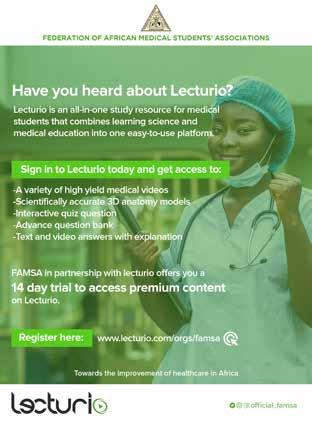
It is our hope that our member students will continue to make the best of these opportunities. Long live Africa! Long live FAMSA! www.famsanet.org September 2022 Edition FAMSA Newsle er 33
FAMSA HQ Administrator 2022
AFRICA, KNOWLEDGE AND RESEARCH


Our African history is known today because stories were told to us
Our past, integrity, and pan-Africanism are kept alive in our hearts and our Muse ums
But truly I say to you, our future, our sta bility, and the black race can only be kept alive with
the blood and heart of knowledge, meth odologies, and Research
Have you ever stopped to think about a world where there are no medicines?
A world where there are no medical and life-saving interventions, no surgical pro cedures, no medical and rehabilitation therapies?
A world where being sick is as good as being dead
I believe if that world was a reality
Sickness, pain, death, and the stench of suffering will swallow up all humanity And yet
When the word Research is mentioned, to the ears of many it sounds boring
To the heart of plenty it feels tiring
Sometimes I wish we are only kidding when we play careless about Research because we shoot ourselves in the leg whenever we ignore Research Did you know
In 1841 William Henry Harrison the President of the United States died of pneu monia
Pneumonia which now can be managed by antibiotics like Penicillin Thanks to Research
The Marvel comics showed us the Africans that we are unstoppable with Research
Through the King T’Challa and his powerful Vibranium kingdom of Wakanda
Now malaria, TB, HIV, and heart conditions are curable or at least manageable Thanks to Research
Now all heroes come let’s build Africa with the bricks of Research for sustainable development
Mary Sathela Kanu
www.famsanet.org September 2022 Edition FAMSA Newsle er 34
RESTORE OUR EARTH
Yusuff Abdul Quadri (TheQwisher) 600lv, Medicine. Ladoke Akintola University of Technology, Ogbomoso Oyo State.
Provide us with more oxygen Our atmosphere with less carbon dioxide.
Restore our earth, Help our lands grow green, Our forests grow thick, Through thick and thin, They are the hearts of our earth. She wails their untimely exit.

Restore our earth, Pollute not our air, We are the products of Mother Earth, Air pollution depletes the ozone layer,
Spread this message to all nooks and crannies,
Tell all and sundry to plant seeds, Tell the world to pollute air less, Greenhouse effect isn't our friend, Our Earth needs help
Hear this call and echo it on.
www.famsanet.org September 2022 Edition FAMSA Newsle er 35
Livingstone, Zambia

This year’s general assembly seeks to create a platform where different health profes sionals, trainees and medical students from all over the African continent and beyond will come together to discuss various issues regarding recovery of medical education post the COVID-19 pandemic and how medical learning institutions as well as students can equip themselves for future pandemics.
The 36th General Assembly and Scientific Conference will also discuss how local research must be integrated into medical education in Africa so as to practically utilise real time generated data to enhance medical education in Africa. Lastly, the FAMSA GA is to have the delegates from attending countries exchange notes on the diversity of medical and educational practices, lessons learnt and job security in their individual countries.
It will be a hybrid event where over 300 delegates from Africa and beyond will be in physical attendance while the rest of the registered attendants will be hosted via a virtual platform. With the theme, Integrating Research into Medical Education in Africa, we anticipate a high-impact, world-changing physical and virtual conference in Zambia, co-hosted by the University of Zambia Medical students’ Association [UNZAMEDSA] and the Lusaka Apex Medical University Medical Students’ Association [LAMUMEDSA].
v. SPONSORSHIP AND ENQUIRIES KAREN TOLOSI-Secretariat +260978377305 ELLARD MUNDIKKE-Publicity +260975742564 Secretary General-UNZAMEDSA +260975283008 Email: famsagazm@gmail.com Website: http://www.famsanet.org Facebook, Twitter, Instagram: @famsaga2022 www.famsanet.org September 2022 Edition FAMSA Newsle er 36
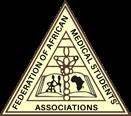
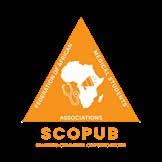
www.famsanet.org For any enquiries, please contact scopub@famsanet.org September 2022 Edition FAMSA Newsle er This Publication has been put together through the efforts of the Federation of African Medical Students’ Associations-Standing Committee on Publications (FAMSA-SCOPUB) @official_famsa








 By: Akinjare David, Akinjobi Oluwagbemisola, and Osaretin Ehiorobo, University of Ibadan Medical Students' Association.
By: Akinjare David, Akinjobi Oluwagbemisola, and Osaretin Ehiorobo, University of Ibadan Medical Students' Association.

























